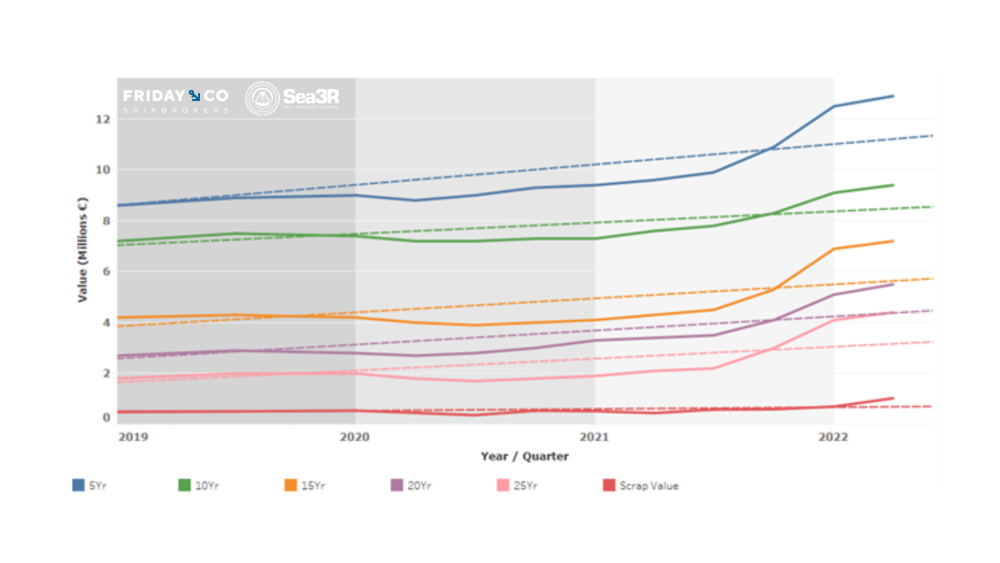
Peter Molloy from Sea3R has been analysing the asset value of one niche trade, European gearless coasters. He says that by focusing on one ship type they have started unlocking shortsea’ s variety of trades.
Molloy elaborates on the thinking behind the European Annual Gearless Coaster report that is produced by his own company Sea3R and Friday & Co. Shipbrokers in Rotterdam, “After looking at various ship types and reports available for smaller tonnage, we decided to narrow the focus of our first annual report to just one ship type, gearless coasters.

Shortly after doing this, we still identified four sub-size categories. With so much variety in design, the decision was made to make a value index instead of trying to find any common indicating vessel. These categories are 3600, 5000, 6500 and 8500 deadweight tonnes.”
Sourcing information
The team needed a reference point or a base from which people could determine the position of asset values in this vessel segment. “We created four index vessels with set design. This way we could anonymise and aggregate any sales information that we had and split the market movements.
Building on what they learned last year, they have started to use AIS data to get a better insight into the supply of vessels, age profiles and operational areas.
“By using Geo-fencing, we could determine what vessels in the different size categories were actually trading in the various areas so we could exclude vessels that have left the area. This meant looking differently at the number of vessels and also scrapping figures.
Knowing the fleet then meant we could critically look at the make-up of the fleet from age distribution to popular building countries. We can also see if there is a preference for size, age or building nation in different locations within the Baltic, Northwest Europe, Mediterranean and the Black Sea.”
Findings
When it comes to sustainability, the findings are clear, “Some of the obvious observations are that the smaller sizes have a serious issue with an ageing fleet, so much so that new buildings alone will not bring the categories up to date for environmental goals. Retrofitting will be needed across all four size categories.
Scrapping is low but newbuild orders are increasing in certain sizes, while utilisation remains high.”
Value
In relation to value, “It is no surprise to anyone in this market if we say that values increased in the last 12 months. However, for us it was most interesting to see the older aged index increase with some 25 year vessels doubling in value.”
In conclusion, Molloy says “We see the short sea segment as highly fragmented. This requires more in depth reporting in the niche segments. This provides its own challenges as the smaller the niche the lesser the number of possible clients willing to purchase such reporting.
However, our goal is to still grow this business as we feel there is a need for transparency in the segment. This will require more reporting on more and more niche markets. Moving forward as more finance and investment are needed in the segment to modernise and adapt to future challenges, transparency is needed to encourage more parties.
If assumptions are not challenged and data and evidence are not analysed to support findings, this segment could have trouble finding willing investors, as a lack of understanding and transparency will translate to higher risk.”

